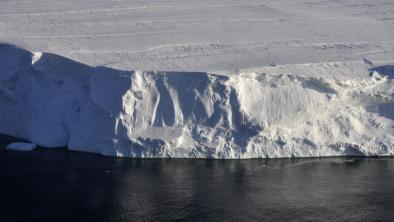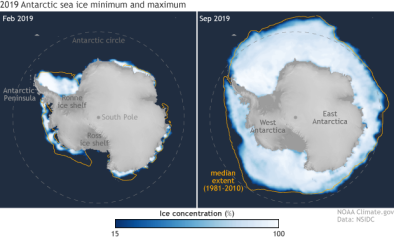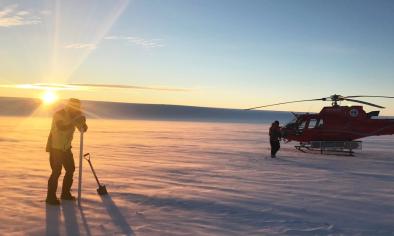Science Source
A carbon budget for the Amundsen Sea Polynya, Antarctica: Estimating net community production and export in a highly productive polar ecosystem
- States that polynyas, or recurring areas of seasonally open water surrounded by sea ice, are foci for energy and material transfer between the atmosphere and the polar ocean
- States that polynyas are also climate sensitive, with both sea ice extent and glacial melt influencing their productivity
- States that the Amundsen Sea hosts the most productive polynya in all of coastal Antarctica, with its vibrant green waters (> 20 µg Chl a L−1) and high primary productivity (> 200 mmol C m−2d−1) leading to high early season net community production (up to 6 mol C m−2), an efficient biological pump, and carbon export (up to 75 mmol C m−2 d−1)
- The authors aimed, during ASPIRE, in austral summer 2010–11, to determine physical and biological mechanisms driving the production and fate of this extraordinary algal bloom, with an eye towards predicting how this system will respond to further change
- Finds an extreme phytoplankton bloom dominated by Phaeocystis antarctica, supported by stratification provided by seasonal sea ice melt, abundant wintertime surface nitrate (> 30 µmol L−1), and an iron flux associated with the nearby melting ice sheets
- Shows that a surprisingly high fraction (up to 62%) of the seasonal net community production was exported to sub-euphotic depths during the high bloom conditions, in the absence of significant grazing from mesozooplankton, although microbial remineralization in the mid-depths reduced export to the bottom
- Finds that with both high export quantities and high biological pump efficiency, the ASPIRE ecosystem stands apart from most other ocean biological pumps, reflecting significant release from both iron and light limitation
- Concludes this globally significant biological pump is clearly linked to climate-sensitive changes in both sea ice cover and nearby ice shelves, but the carbon cycle feedbacks to climate may not be sustainable, particularly if sea ice continues to disappear from the region
Related Content
Headline

Jan 29, 2020 | BBC News
Journey to the 'doomsday glacier'
Headline

Nov 22, 2019 | NOAA Climate.gov
Understanding climate: Antarctic sea ice extent
Headline

Mar 26, 2019 | The Guardian
Australian researchers find huge lakes beneath largest east Antarctic glacier
Science Source
| Geophysical Research Letters
Mass Loss of Totten and Moscow University Glaciers, East Antarctica, Using Regionally Optimized GRACE Mascons
Yara Mohajerani, Isabella Velicogna, Eric Rignot


